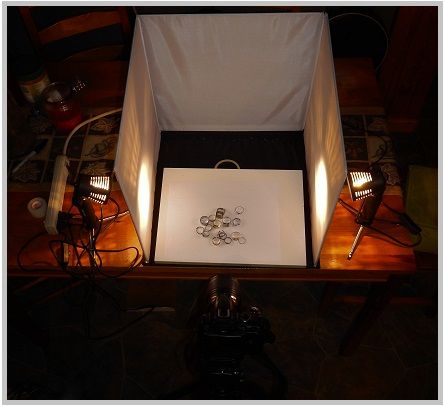
It poured rain this afternoon, so I opted to get my rings sorted out and prepare to take photos of them. Here's my setup. I bought a photo tent a few years back, and use my macro lens on the camera. Some of the results surprise me, as I have never taken any photography courses. I kind of read about it and practiced. It's kind of like learning to use a metal detector, only you use your eyes instead of your ears.
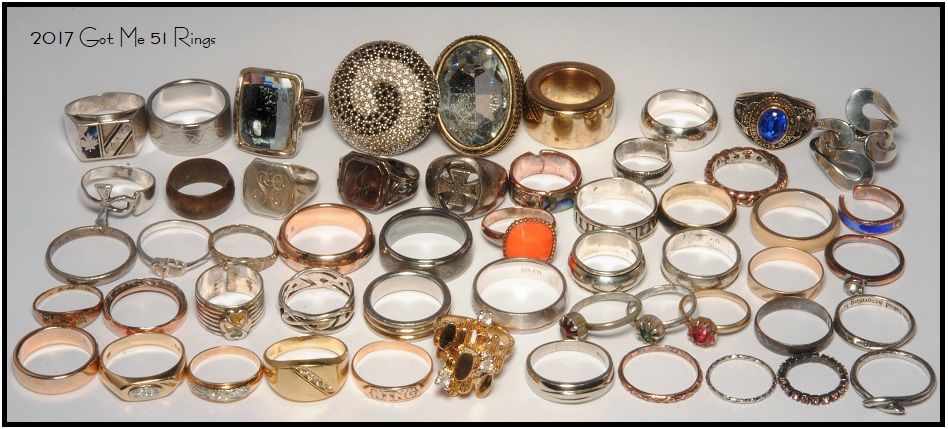
Here's the complete totals for this year. About half were found in the water, the other half were on land. The key to finding them is to hunt places where lots of people congregate. It's better if the grass is thick and long, as real short grass or trampled grass allows a lot of good finds to be eyeballed, picked up by people without metal detectors. Check out those odd signals. The smooth ones in the 50's can be gold. But, I have also dug gold rings in the 40's, 50's, 60's, 70's and 80's (VDI readings) Where they read on the machine is dependent on their mass, diameter, what the gold is mixed with and any oxidation on the gold. There is no such thing as a gold detector which can easily find gold. If someone ever tries to sell you one, walk away. Finding gold is a lot of work. You have to dig a lot of trash to get lucky! Silver rings are easy......they generally give a VDI reading in the 80's.
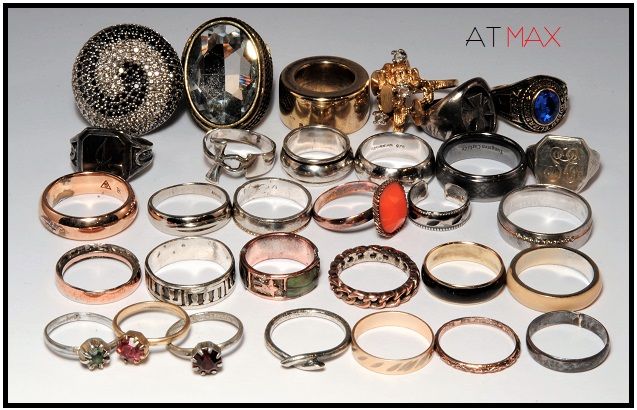
Here's what the AT MAX found. Quite a few came out of previously hunted spots. Hunting in true all metal with the iron audio running at 44 allowed me to hear those real deep whispers, unattainable with my other VLF detectors. The Garrett ATX PI does get to those depths. But, you end up digging everything, which is fine in hunted out areas. You usually get the finds which others missed.

The AT PRO / AT MAX are no slouches. I took the AT PRO on holidays this past summer, to Lake Huron and got some nice gold rings. The Audio is very unique, and the unit bangs real hard on coins and rings.
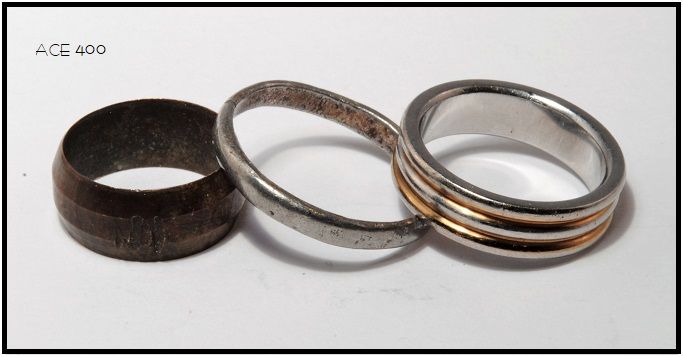
I took out the ACE 400 few times this year. It has found lots of rings. It's a great land machine for parks and schools.
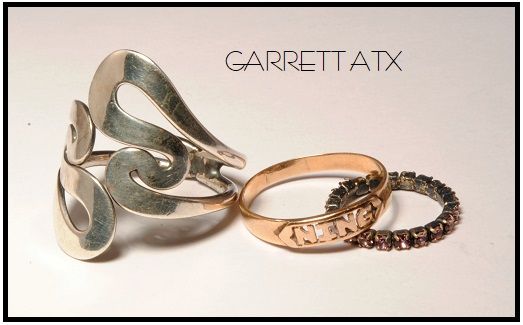
Here's my finds this year with the Garrett ATX PI detector. I love using this one in the spring and fall fresh water lakes, hunting places which have been pounded to death. Lucky for PI (pulse induction) users, other hunters have already removed a lot of the trash, leaving some of the real deep targets for easy pickings. This machine has paid for itself years ago.


